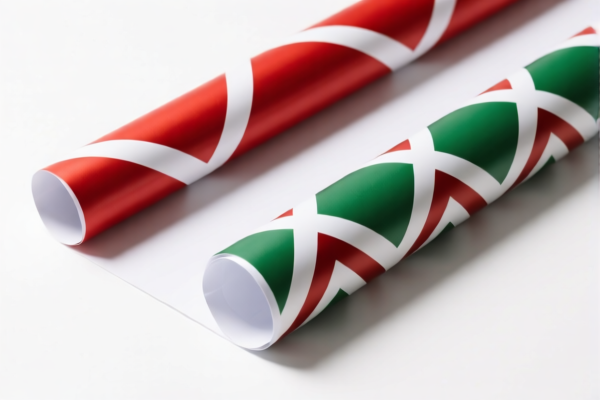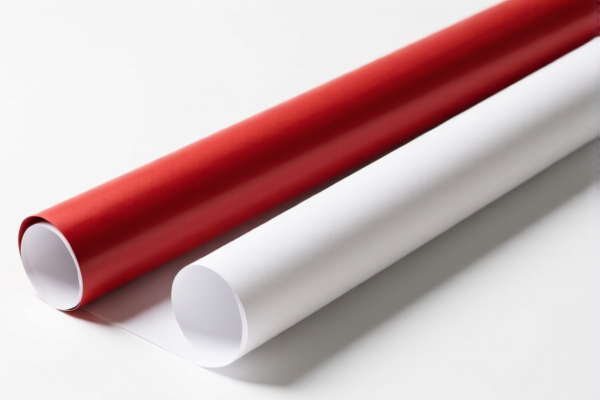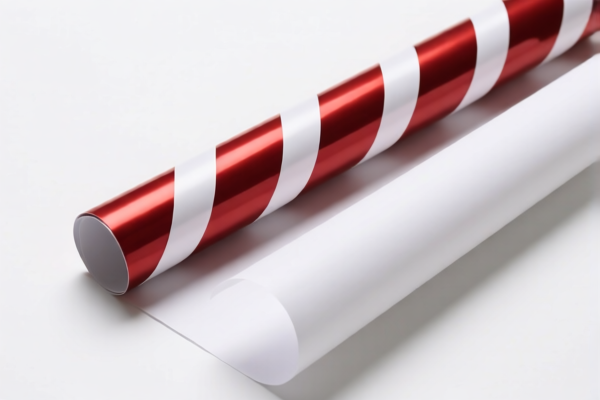| HS Code | Official Doc | Tariff Rate | Origin | Destination | Effective Date |
|---|---|---|---|---|---|
| 4823901000 | Doc | 55.0% | CN | US | 2025-05-12 |
| 4823902000 | Doc | 55.0% | CN | US | 2025-05-12 |
| 4819504060 | Doc | 55.0% | CN | US | 2025-05-12 |
| 4819504020 | Doc | 55.0% | CN | US | 2025-05-12 |
| 4911998000 | Doc | 37.5% | CN | US | 2025-05-12 |
| 4911996000 | Doc | 37.5% | CN | US | 2025-05-12 |
| 4906000000 | Doc | 37.5% | CN | US | 2025-05-12 |
| 4906000000 | Doc | 37.5% | CN | US | 2025-05-12 |




Wrap Paper
Wrap paper, also known as wrapping paper, gift wrap, or gift-wrapping paper, is a thin paper designed for enclosing gifts. It is commonly used to make gifts more visually appealing and is a significant part of gift-giving traditions in many cultures.
Material:
- Paper: The base material is typically paper, varying in weight and quality. Lightweight papers are more affordable but tear easily. Heavier weight papers provide a more luxurious feel and are less prone to damage.
- Coatings: Papers are often coated with various materials to enhance their appearance and durability. Common coatings include:
- Glossy: Provides a shiny, reflective surface.
- Matte: Offers a non-reflective, more subdued appearance.
- Metallic: Incorporates metallic flakes or coatings for a shimmering effect.
- Foil: A thin layer of foil is applied for a highly reflective, often textured finish.
- Recycled Content: Increasingly, wrap paper is produced using recycled paper fibers, offering a more sustainable option.
Purpose:
The primary purpose of wrap paper is decorative. It serves to:
- Enhance the presentation of a gift.
- Conceal the identity of the gift's contents.
- Add to the excitement and anticipation of receiving a gift.
Function:
Wrap paper functions by being pliable enough to conform to the shape of a gift while being strong enough to prevent tearing during handling. Its printed designs and colors contribute to its aesthetic appeal.
Usage Scenarios:
- Birthdays: A common application for brightly colored and patterned papers.
- Holidays: Specific designs are often associated with holidays like Christmas, Hanukkah, and Valentine's Day.
- Weddings: Elegant papers with sophisticated patterns are frequently used.
- Other Special Occasions: Used for baby showers, graduations, and other events.
Common Types:
- Printed Paper: The most common type, featuring a wide variety of designs, colors, and patterns.
- Foil Wrap: Offers a metallic sheen and is often used for more formal occasions.
- Tissue Paper: Lightweight and delicate, often used for smaller gifts or as an additional decorative element.
- Reusable Fabric Wrap (Furoshiki): An increasingly popular sustainable alternative, using patterned fabric squares to wrap gifts.
- Kraft Paper: A plain, unbleached paper often used for a rustic or minimalist aesthetic. It is often paired with twine and natural decorations.
- Patterned Paper Rolls: Varying widths and lengths of paper with repeating designs.
- Character/Themed Wrap: Featuring popular characters or themes (e.g., superheroes, animals, movies).
Based on the material, use, function, and application scenarios, “wrap paper” generally refers to paper used for packaging or covering objects. The following HS codes are relevant based on the provided information:
- 4823901000: This HS code covers “Other paper, paperboard, cellulose wadding and webs of cellulose fibers, cut to size or shape; other articles of paper pulp, paper, paperboard, cellulose wadding or webs of cellulose fibers: Other: Of paper pulp”. This could apply if the wrap paper is made from paper pulp. The total tax rate is 55.0%, comprised of a 0.0% base tariff and a 25.0% additional tariff, increasing to 30.0% after April 2, 2025.
- 4823902000: This HS code covers “Other paper, paperboard, cellulose wadding and webs of cellulose fibers, cut to size or shape; other articles of paper pulp, paper, paperboard, cellulose wadding or webs of cellulose fibers: Other: Of papier-mâché”. This applies if the wrap paper is made of papier-mâché. The total tax rate is 55.0%, comprised of a 0.0% base tariff and a 25.0% additional tariff, increasing to 30.0% after April 2, 2025.
- 4819504060: This HS code covers “Cartons, boxes, cases, bags and other packing containers, of paper, paperboard, cellulose wadding or webs of cellulose fibers; box files, letter trays and similar articles, of paper or paperboard of a kind used in offices, shops or the like: Other packing containers, including record sleeves: Other Other: Other”. This could apply if the wrap paper is specifically designed as a packing container. The total tax rate is 55.0%, comprised of a 0.0% base tariff and a 25.0% additional tariff, increasing to 30.0% after April 2, 2025.
- 4819504020: This HS code covers “Cartons, boxes, cases, bags and other packing containers, of paper, paperboard, cellulose wadding or webs of cellulose fibers; box files, letter trays and similar articles, of paper or paperboard of a kind used in offices, shops or the like: Other packing containers, including record sleeves: Other Fiber drums, cans, tubes and similar containers”. This applies if the wrap paper is in the form of a fiber drum, can, or tube. The total tax rate is 55.0%, comprised of a 0.0% base tariff and a 25.0% additional tariff, increasing to 30.0% after April 2, 2025.
Chapter 48: This chapter generally covers paper and paperboard. Chapter 49: This chapter generally covers printed matter.
It is important to determine the exact material composition and form of the wrap paper to select the most appropriate HS code.
Customer Reviews
No reviews yet.